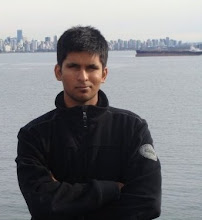There were several reasons
1. I forgot my password
2. there was nothing so special( other than spending three & half months at Panama anchorage thanks to RECESSION.
 |
| Panama Anchorage.... |
So this is all about Habitat( the short form we used for "Habitat For Humanity"-HFH)
If I'm correct I last volunteered for Habitat in 2003. It s almost 8 years I was away from It, mainly because of my Marine training, and then my Job....
Thanks to my good friend Francis( coordinator of the global village programme in HFH Sri Lanka )
I received an invitation to join again to Volunteer to Build some houses in Negombo, in the city where I live with a Global Village team from Northern America.
Since I know the Spirit of Habitat I couldn't say NO.......
 |
| I'm Strong..... |
 |
| young and old..... visitors and locals all together for a goal.... |
Mainly I became an interpreter to translate between SINHALESE & ENGLISH, so it helped me to be friendly with both parties( the GV team and homeowners/ locals)
 |
| I can also do hard work...... |
 |
| Young spirit.. |
Though it was bit hard on first day, believe me It was so much fun....... Sailing all around was a great advantage to get along with the team. 'cos I've been to many places where they came from in USA and CANADA( of course I've just been many areas of USA and CANADA but haven't spent much time in any place explore it very well.... still we had a slight idea about those places and people living there.)
 |
| Digging a Foundation is not a easy job... |
I was amazed when I learnt from Francis that the team leaders Bob Bell and Leslie Bell have participated 41 and 39 tours in order. I said earlier it is fun but anyway if you are to volunteer to build houses...... then you have to work..... work really hard, for example mixing a concrete, digging a foundation...etc are not at all easy jobs. On the other side there were girls at the age of 22, 23, 25..... and I know they can find lot of interesting holiday ideas than building a house under the hot sun in Sri Lanka. So as a whole I was so impressed....
 |
| its play time..... |
 |
| Oh...shit What I've done? |
 |
| I've never seen a Rooster before.... Can i take this one home? |
 |
| Photo time..... |
 |
| wanna have some Ice cream? |
I know HABITAT always have that spirit..... that can do wonders.... So I have to thank Millard Fuller for founding such a great organization and specially to Francis for inviting me for this event( Personally it helped me to lose some pounds also....lol )



